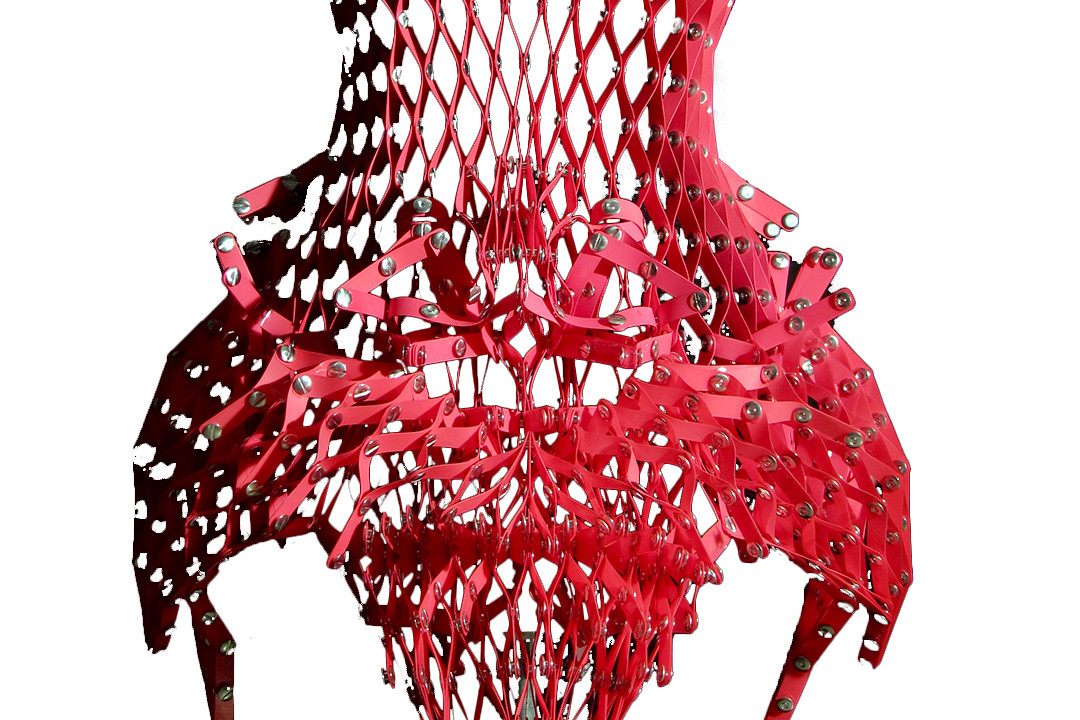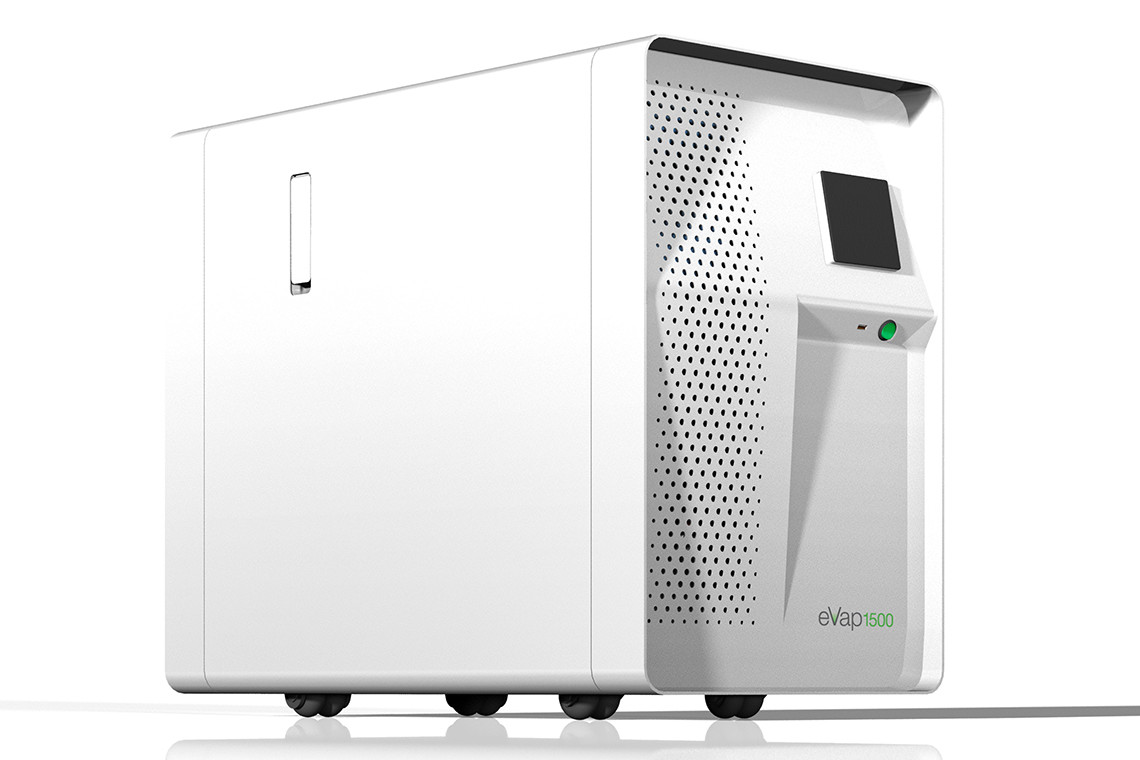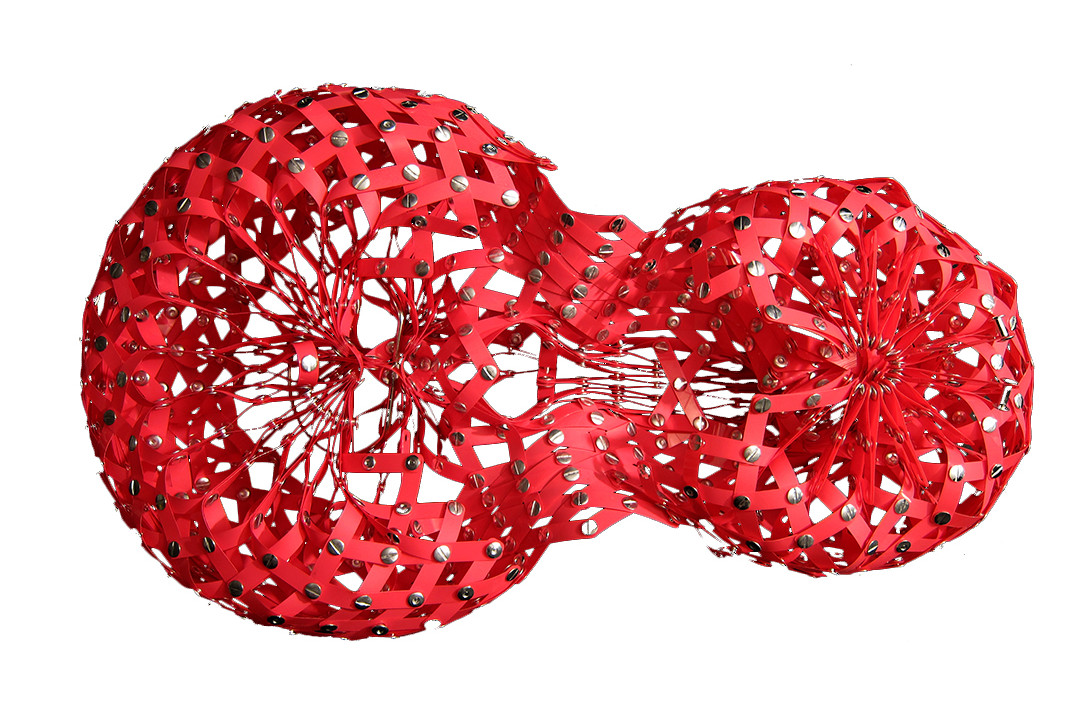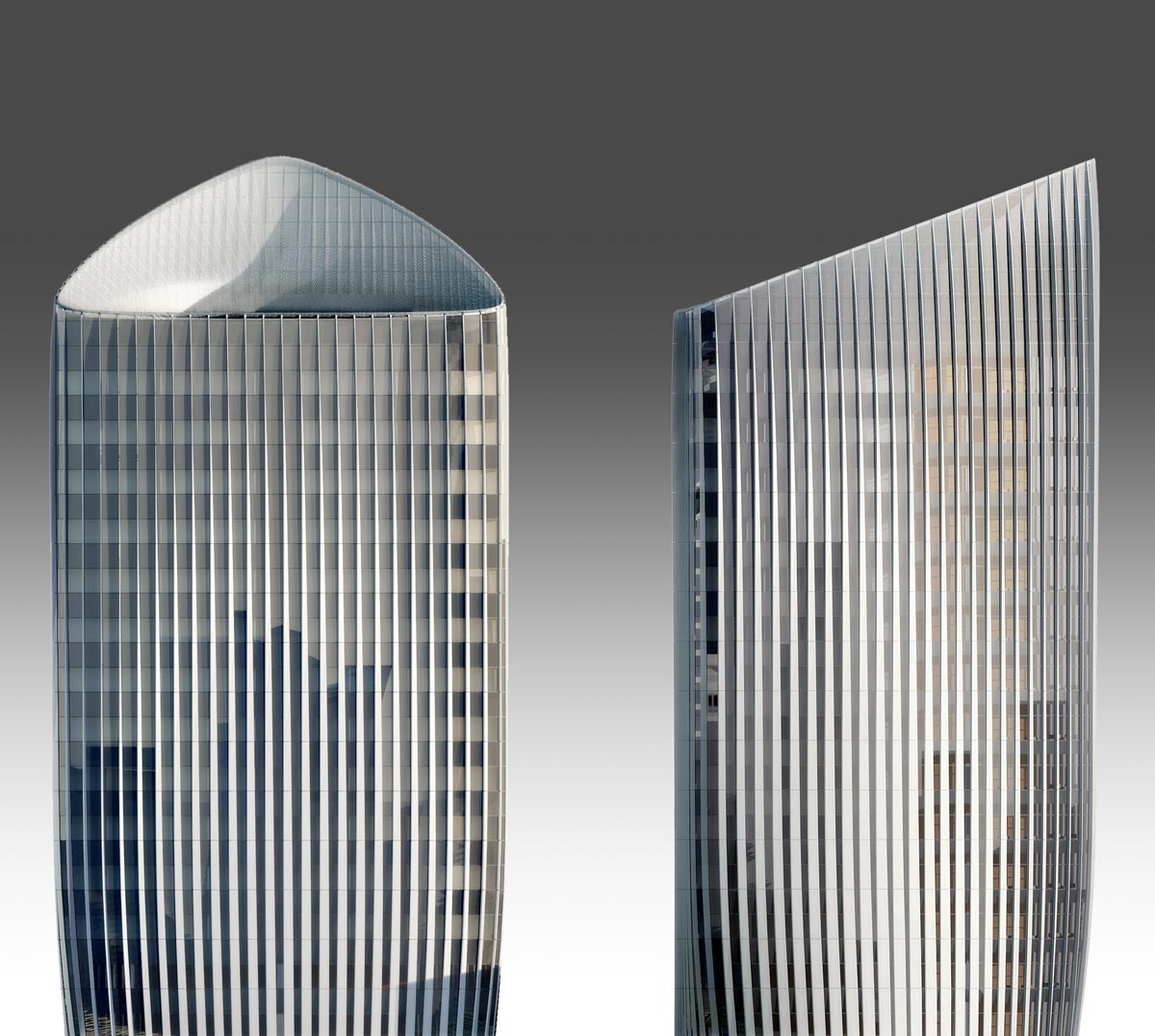
This past fall, the Yazdani Studio, along with Gruen Associates and builders Hensel Phelps participated in an invited competition to design a new US Courthouse in the heart of downtown Los Angeles. The site for the project is located at the intersection of Broadway and 1st, one block West of the LA times building and a few blocks east of the Walt Disney Concert Hall.
This article will focus on the facade design. To learn more about the competition, the general design approach, and the three competing designs, please visit the LA Curbed website or Yazdanistudio.com.
The proposed facade is based on an fixed paratonic system that can balance use, solar heat gain, and daylight harvesting to produce an optimized response to the specific site and program of the project. We begin with site analysis and move on to system design and optimization. Rationalization and conceptual cost estimation will be discussed in part 2 of this post.

Site
A site model including terrain and nearby buildings is generated and imported into Autodesk Ecotect for analysis. An incident solar radiation analysis is performed to inform the team how the site and preliminary massing will be affected by solar heat gain. The towers on Bunker hill to the South West are especially relevant as they shade our site in the afternoon for much of the year.
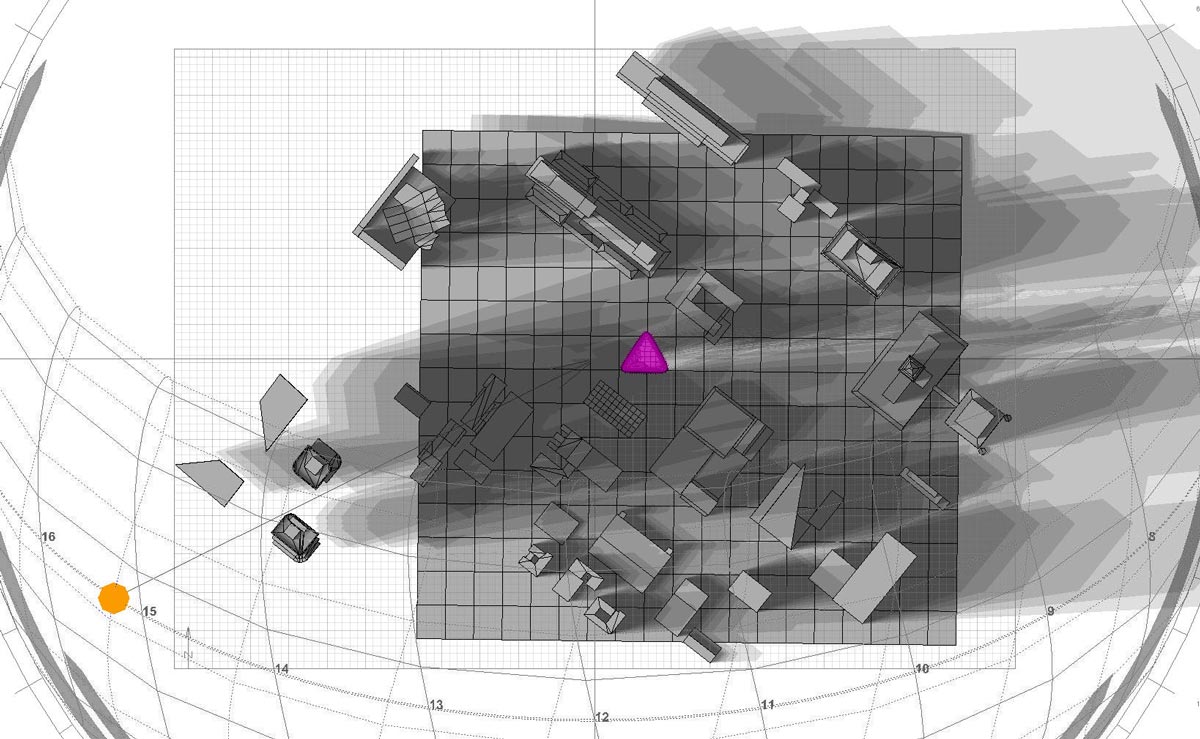
At this point in the competition, it had been determined that the team would pursue a tower scheme based on triangular floor plate. The analysis below compares tower orientation in conjunction with a vertical shading device. The results inform the team that optimal orientation varies depending on the shading device used. The use of vertical fins used in combination with a North/ South orientation produces the most favorable results reducing heat gain by 34%. The solar radiation charts also illustrate that nearby towers on bunker hill shade the building in the afternoon, blocking much of the low-angle western sunlight. Low angle sunlight from the south and south-east is clearly the largest contributor to total solar heat gain for this site.
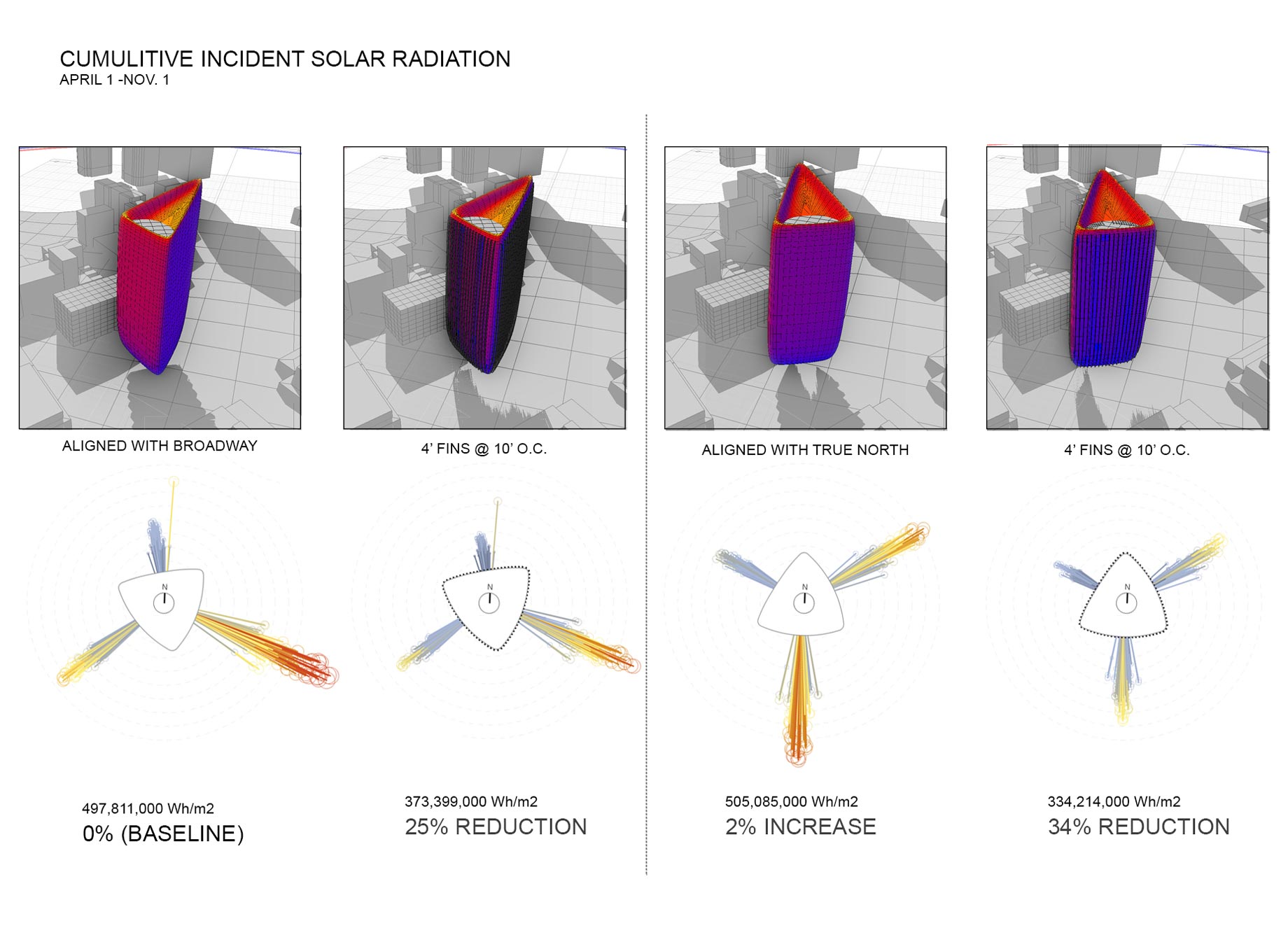
The solar radiation charts used in the graphic above are developed by our research team to allow us to understand both the intensity of the sun’s heat and the direction it is arriving from in a single frame. More info on this graphic and instructions on how to read the chart can be found in a previous blog post “A New Way of Visualizing Solar Radiation“.
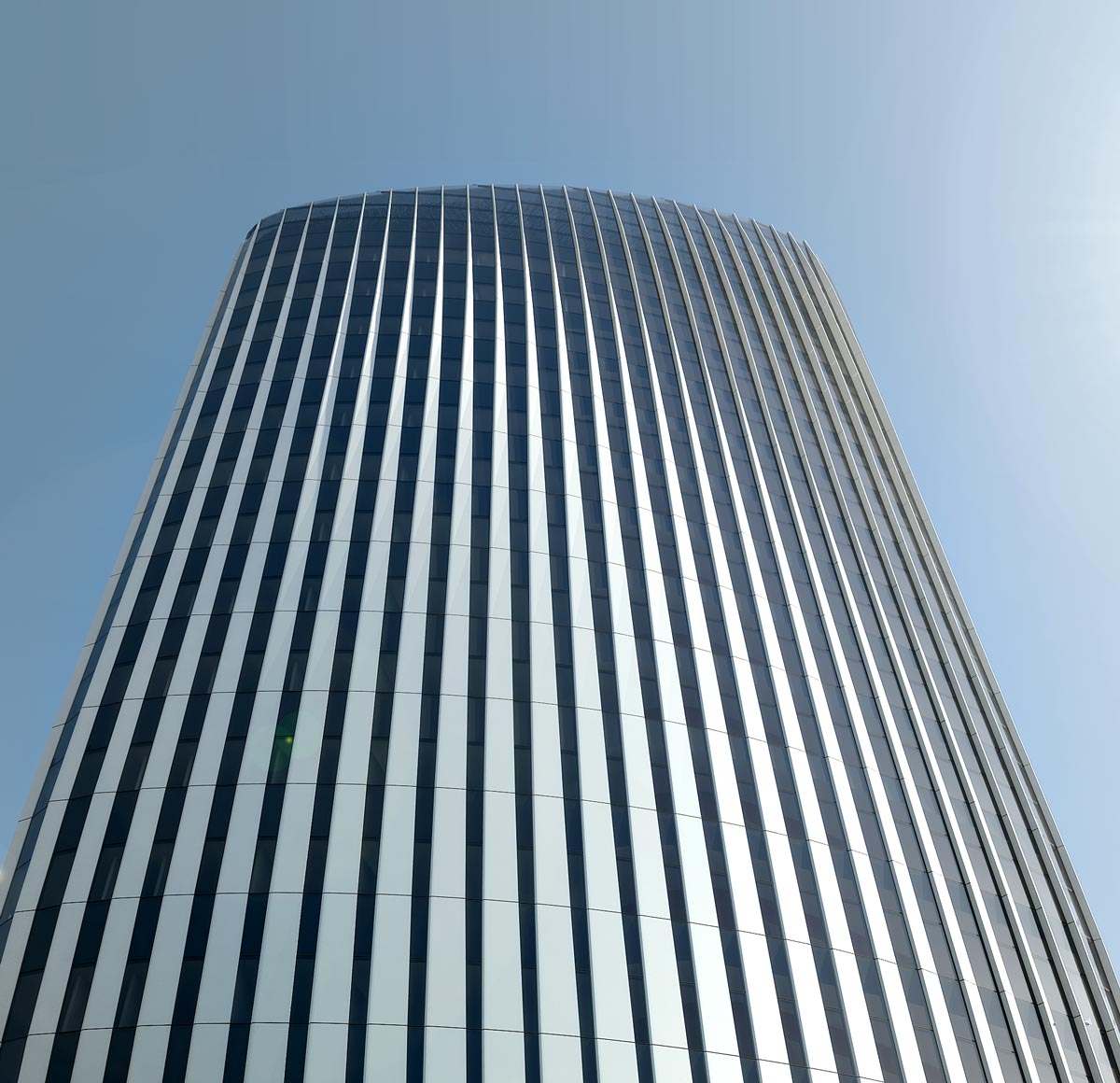
Because builders and their subcontractors are committing to a total project cost as part of the competition requirements, the design build format of the competition necessitates strict adherence to budgetary limitations even in the conceptual design phase. The budget for this project does not support a kinetic facade or two-skin approach. Instead the team chooses to develop a flexible unitized system that can adapt to local conditions through panel variation. Of the options considered, a unitized system with a triangular vertical projection is selected.
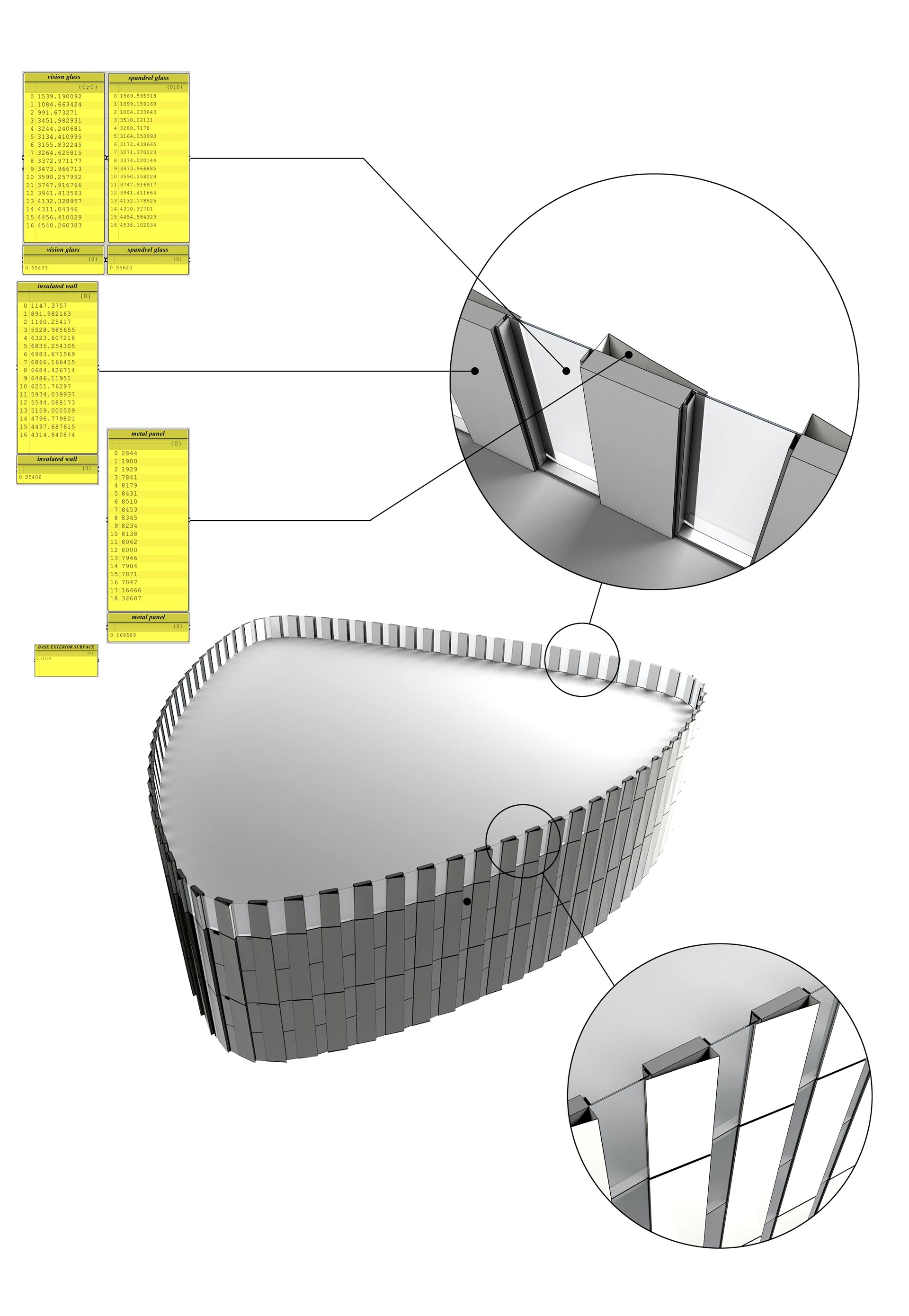
The facade is divided into 8′ modules. Each 8′ length represents a prefabricated unitized curtain panel. Each panel is further subdivided into an insulated panel and a glazing unit. A vertical projection, triangular in plan, is introduced to clad the insulated panel and provide shading where appropriate. Two conditions are left variable to allow for flexibility: the ratio of glass to insulated panel and the depth of the projection.
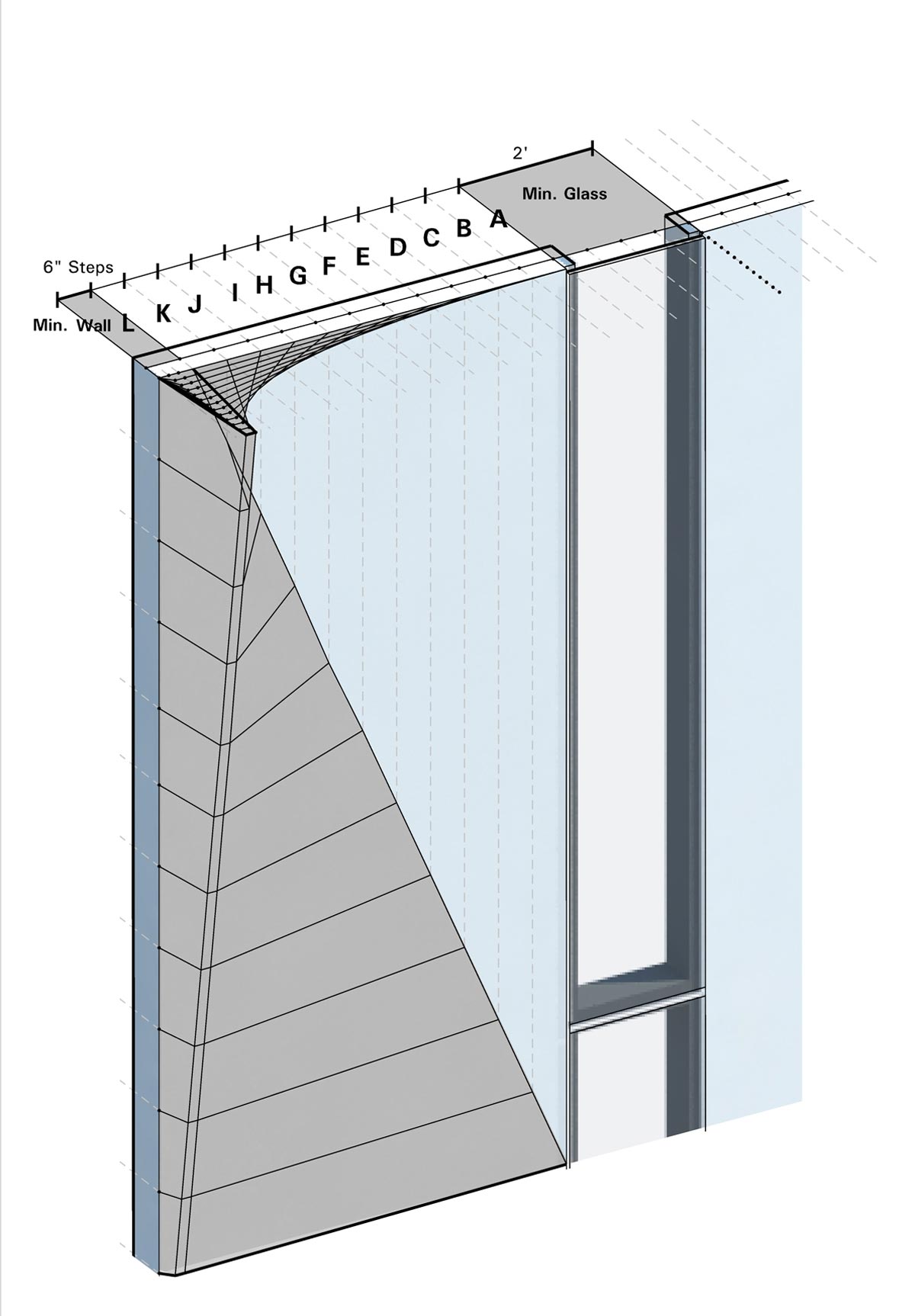
Judges chambers located along the northwest facing facade benefit from larger glass panels up to 7′ wide. Vertical projections in this zone are increased to 2’6″ in order to provide shade for the large glazed areas. The combined effect produces office space that makes the most of natural daylight, requires less cooling, and benefits from panoramic views of the city and Hollywood Hills beyond.
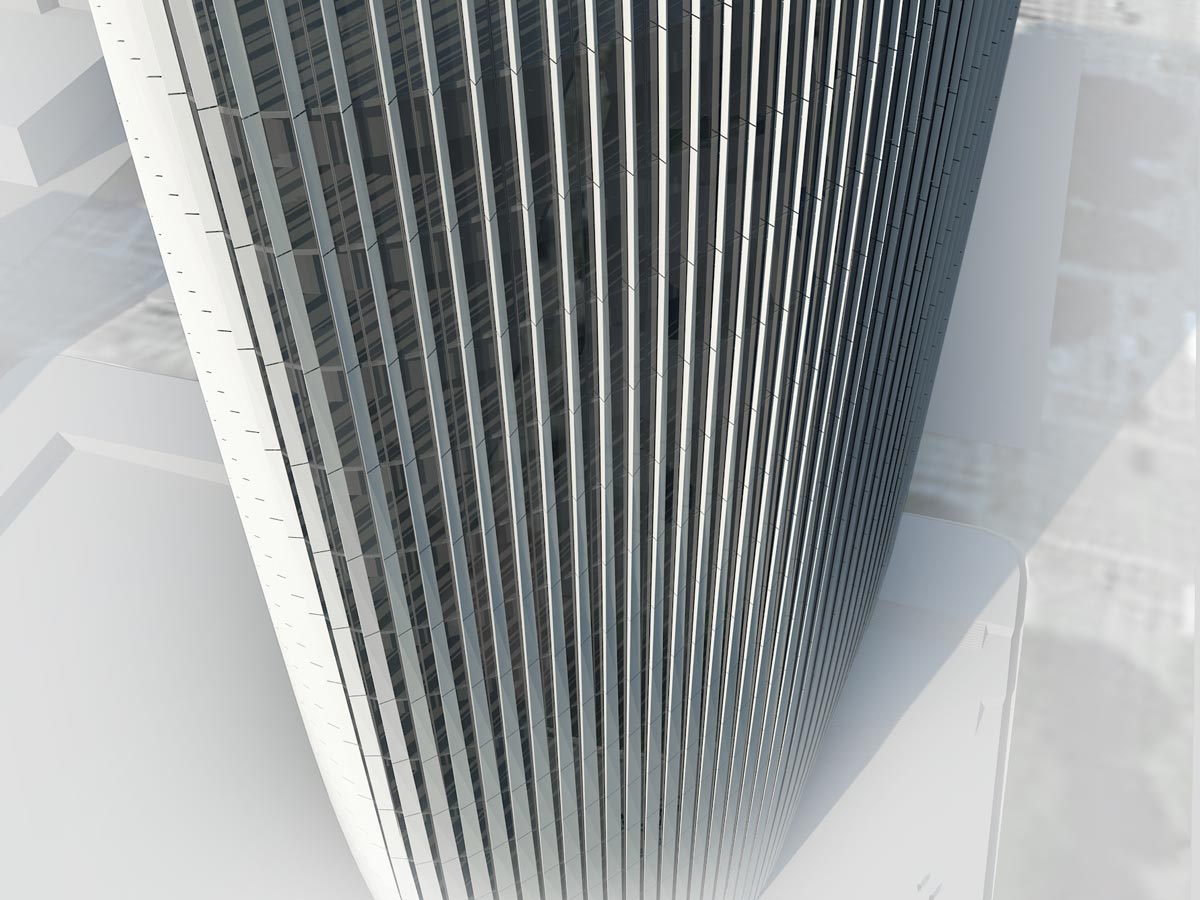
Along the southeastern side of the building, glazing panels are minimized to a 2′ width to reduce heat gain. Vertical fins are not effective here so projections are reduced to conserve material. In this manner each section of the facade is considered and optimized to increase daylight, minimize solar heat gain, and take advantage of available views.
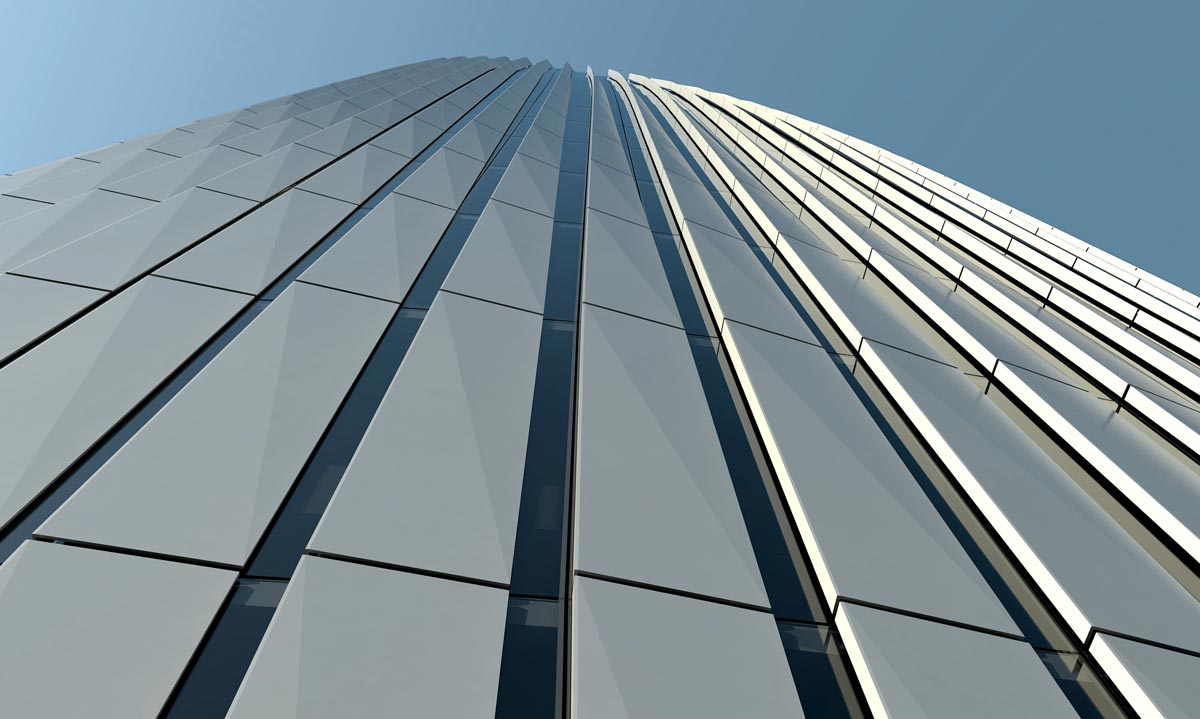
We run three incident solar radiation calculations in Ecotect to compare the performance of the tuned facade against a “typical” unitized system. This “typical” unitized facade is based on a single generic panel type. To maintain consistency, the generic model is built with the same overall glazed area. The difference between the two models is that glazing and insulated material is strategically positioned in one and evenly distributed in the other. In a third analysis, vertical projections are added to the optimized model.
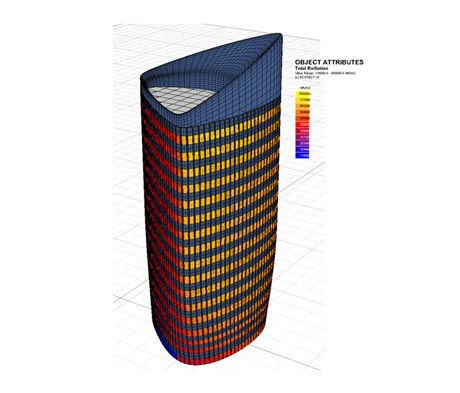

LA Courthouse Competition Responsive Facade
Responsive Skins
